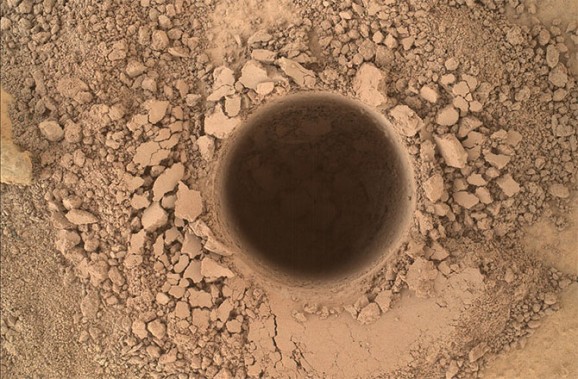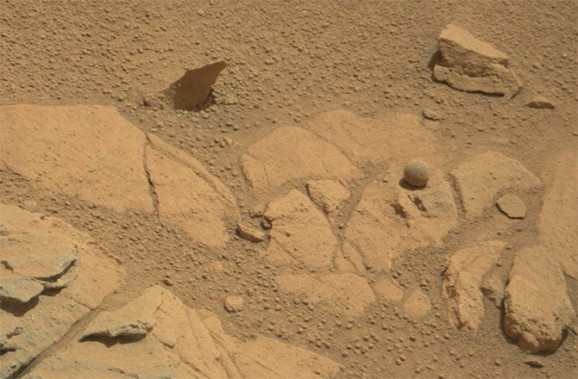Curiosity Drills Into Mount Sharp And Finds A Weird Ball
This article is more than 2 years old
 As time goes on, the Mars-based Curiosity rover continually proves itself worthy of its name. It’s already uncovered all kinds of discoveries that have and will continue to shape the way scientists think about the Red Planet, such as the existence of water on the arid surface. Now, over two years after that dramatic landing, it has finally reached its destination, Mount Sharp. And along the way, it’s found some unusual objects.
As time goes on, the Mars-based Curiosity rover continually proves itself worthy of its name. It’s already uncovered all kinds of discoveries that have and will continue to shape the way scientists think about the Red Planet, such as the existence of water on the arid surface. Now, over two years after that dramatic landing, it has finally reached its destination, Mount Sharp. And along the way, it’s found some unusual objects.
The latest head-scratching finding is a round ball—and I mean a perfectly round ball. This one hasn’t appeared to move on its own, but its spherical shape has some scientists baffled. How did the rock come to have this shape if not smoothed and molded by human hands or technology? The best answer NASA scientists can come up with is that it’s a concretion, or a compact ball of matter that forms between sedimentary particles. Concretions are formed by precipitation of minerals into the pores of forming rock, so they often take on a spherical shape, much like tiny “blueberries” observed a decade ago by the Opportunity rover. It’s another discovery that supports the existence of water on the planet long ago.
 Scientists will continue to gather information about Mars’ geology as Curiosity drills into the base of Mount Sharp, a mountain that rises 3.5 miles above the surface. The rover just started boring into the mountain’s base at a location called Pahrump Hills, harvesting powdered rock from a 2.6-inch-deep hole. The rover will analyze these samples itself in its laboratory (otherwise known as its stomach), and it will extract minerals from the rock.
Scientists will continue to gather information about Mars’ geology as Curiosity drills into the base of Mount Sharp, a mountain that rises 3.5 miles above the surface. The rover just started boring into the mountain’s base at a location called Pahrump Hills, harvesting powdered rock from a 2.6-inch-deep hole. The rover will analyze these samples itself in its laboratory (otherwise known as its stomach), and it will extract minerals from the rock.
Thus far, scientists say that the latest sample is softer than others previously gathered. It also appears redder in color. The rover will examine the different rock layers in the mountain, gradually moving to higher and younger layers.
Scientists hope that by comparing the various samples they’ll gain some insight into the changes in the Martian landscape over time, and to how such mountains formed. Since the older layers most likely formed when Mars’ climate was much wetter, scientists will be able to assess the sediments left behind. Perhaps they’ll start looking for evidence suggesting that whatever life forms might have existed on Mars enjoyed a spirited game of baseball, or—even stranger—golf.












